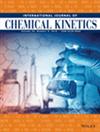In Situ Carbon Coating Induced by Molecular Intercalation for Fabricating Advanced High F-Content KVPO4F Cathode Toward Potassium-Ion Batteries
Abstract
Although potassium (K) vanadyl phosphate fluoride (KVPO₄F) is considered one of the most promising cathode materials for K-ion batteries, its practical application is hindered by poor electronic conductivity and fluorine (F) loss during the synthesis process. In this work, a novel synthetic route is designed to realize the advanced KVPO₄F cathode material (denoted as KVPO4F@C) by adopting in situ carbon coating approach initiated by isobutanol molecular intercalation, delivering two distinct characteristics of high F-containing and limited particle growth. On one hand, the as-generated in situ carbon coating layer enhances the electronic conductivity of KVPO₄F material and prevents the particle agglomeration during the calcination process. On the other hand, the as-introduced V–F–C bonds at the KVPO₄F/C interface realizes a high F-containing of KVPO4F@C cathode material without large-scale F loss. As a result, the KVPO4F@C cathode retains a high discharge capacity of 63.94 mAh g⁻¹ after 100 cycles at 2C as well as superior rate performance. This study highlights the critical role of the pathway to realize carbon coating approach in enhancing the electrochemical performance of KVPO4F cathode.

 求助内容:
求助内容: 应助结果提醒方式:
应助结果提醒方式:


